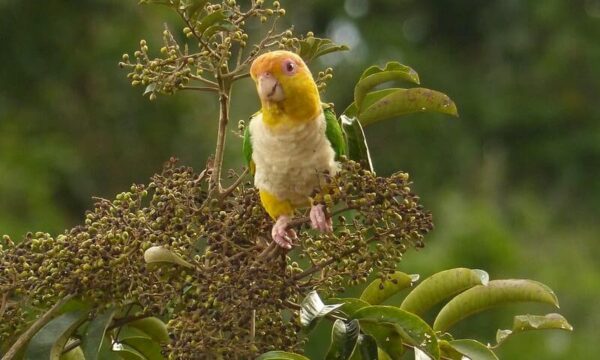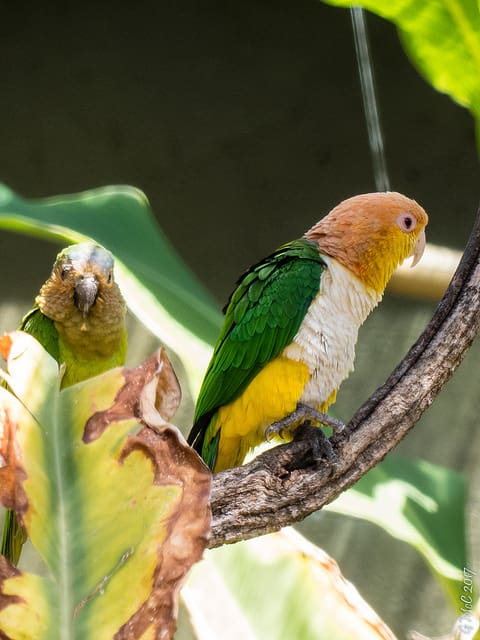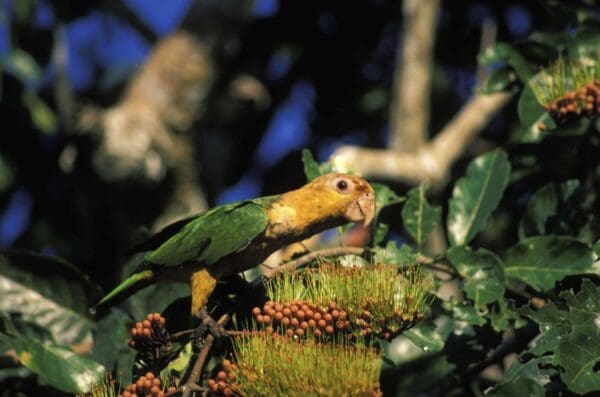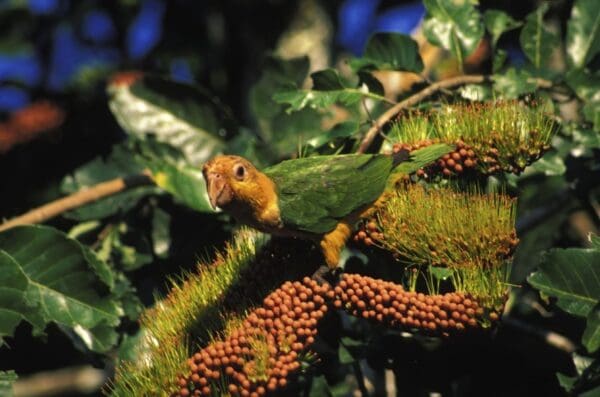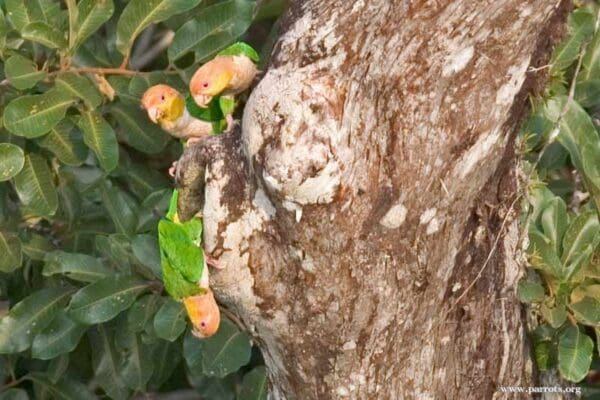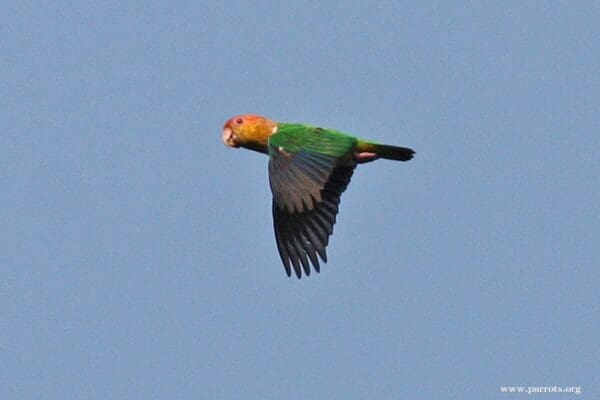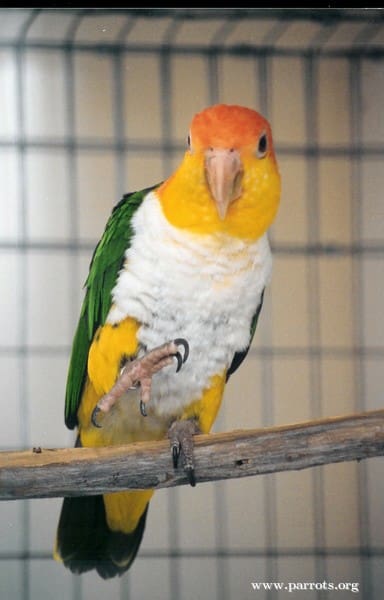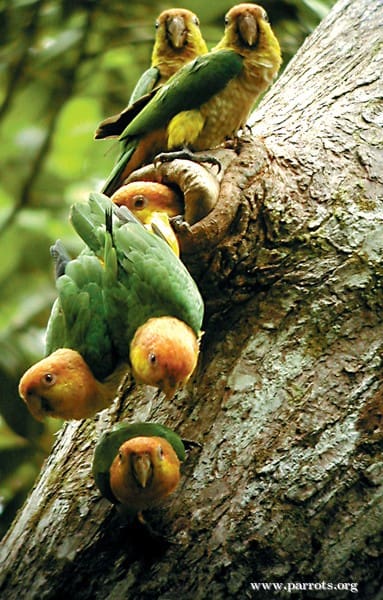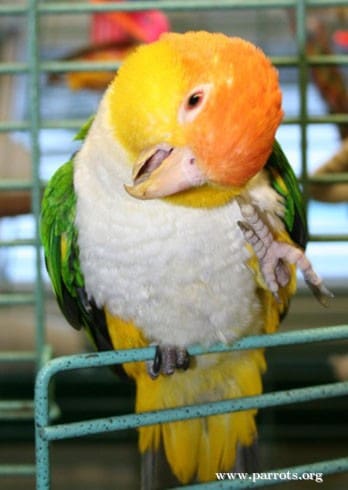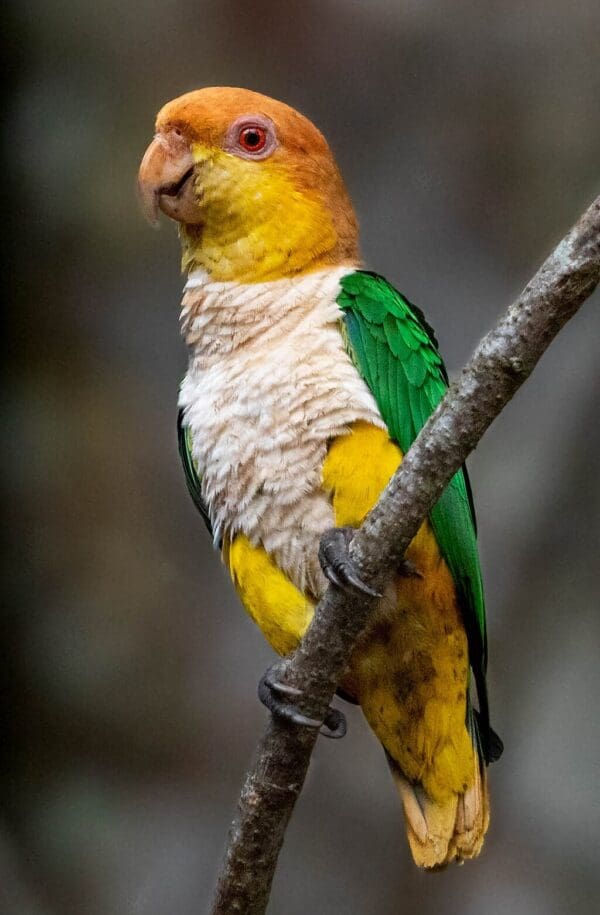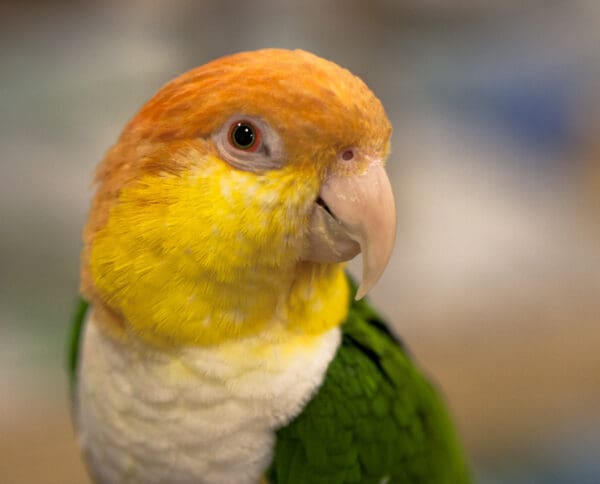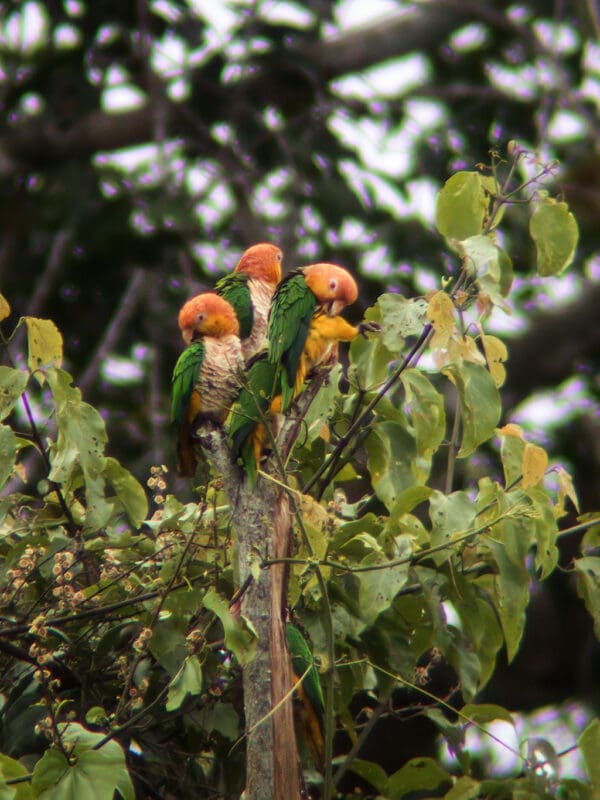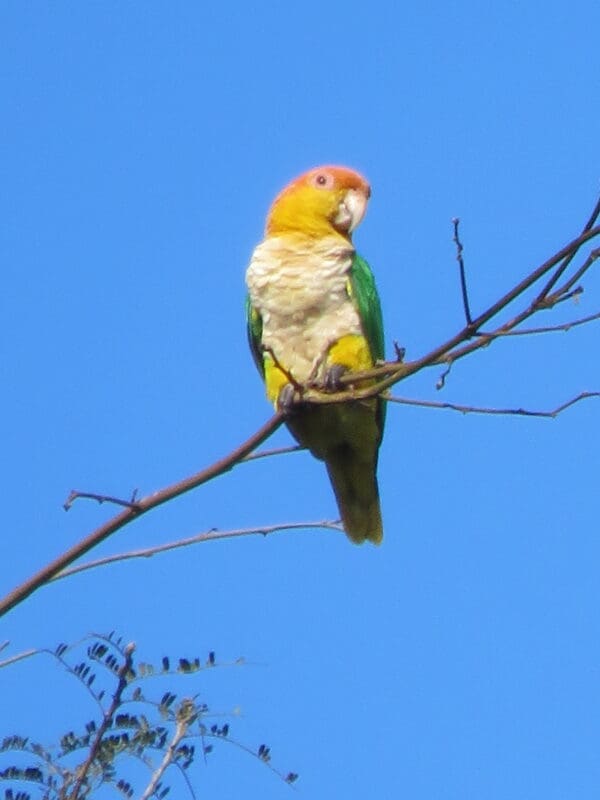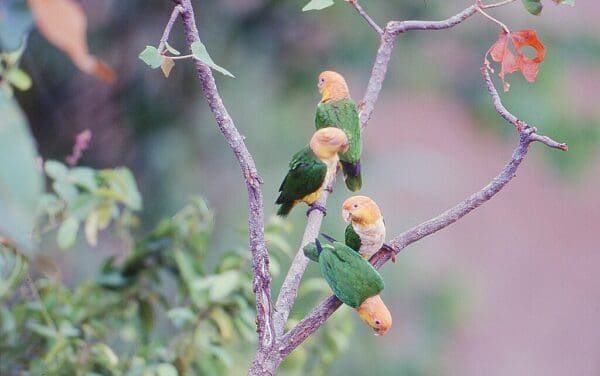White-bellied Parrot
Also known as:
White-bellied Caique
Also known as:
White-bellied Caique
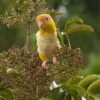
![© Nicolas Rénac [CC BY-NC-ND 2.0] via Flickr](https://parrots.org/wp-content/uploads/2023/01/wpt_White-bellied-Parrot_1101-16-100x100.jpg)
![© Pursuedbybear [CC BY-NC-ND 2.0] via Flickr](https://parrots.org/wp-content/uploads/2023/01/wpt_White-bellied-Parrot_1101-13-100x100.jpg)
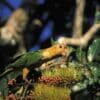
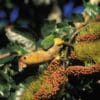
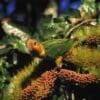
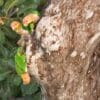

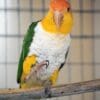
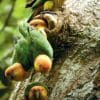
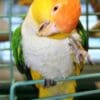
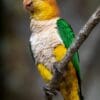


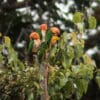

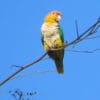
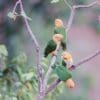
DID YOU KNOW?
The White-bellied Parrot is one of two species of parrot with a white abdomen, the other being the Black-headed Parrot.

Pionites

leucogaster
Size:
23 cm (9 in)
Weight:
165-170 g (5.8-6 oz)
Subspecies including nominate:
three: P.l. leucogaster, P.l. xanthurus, P.l. xanthomerius
Colour Adult:
P.l. leucogaster: Both adults apricot crown, nape, hindneck and upper ear coverts; yellow lores throat and sides of head; green upperparts; secondary feathers with blue margins; creamy white breast and abdomen; green thighs; undertail coverts yellow; underwing coverts green; uppertail green. Beak horn-coloured. Eye ring bare and pink. Eye orange/red.
P.l. xanthurus: Both adults in general paler; yellow thighs, flanks, undertail coverts and all of tail; rump and upper tail coverts yellow, mixed with green.
P.l. xanthomerius: Both adults yellow thighs and flanks; tail green.
Colour Juvenile:
P.l. leucogaster: Dark feathers in apricot cap; white belly flecked with yellow. Eye ring grey, eye brown.
Call:
Wide variety of calls, including whistles, chirrups, and shrieks. Loud alarm call. Also songlike. Low soft growl in captive birds.
More Information:
Content Sources:
CITES
Cornell Lab of Ornithology/Birds of the World
Parrots: A Guide to Parrots of the World, Juniper and Parr, 1998
D. Milpacher, World Parrot Trust, pers. comm.
Parrots of the World, Forshaw and Cooper, 1989. 2010 edition
Parrots of the World, Forshaw, 2006.
Parrots in Aviculture, Low, 1992.
Psittacine Aviculture, Schubot, Clubb and Clubb, 1992.
Captive Status:
Uncommon
Longevity:
25-40 yrs.
Housing:
Aviary or suspended cage, minimum length 2 m (6.5 ft).
Diet:
Mixture of soaked, sprouted or dry seed, sprouted beans, fresh vegetables such as: carrot, peas in the pod, kale, broccolini, red pepper; emphasis on fresh fruit such as: apple, orange, banana, pomegranate, berries, kiwi fruit, pear apple, pears, mangos, papaya; millet sprays, complete kibble.
Enrichment:
Foot toys, bird safe chewable branches of pine, fir, elder or willow, sterilized pine cones, hanging toys, ladders, vegetable tanned leather knotted toys, puzzle toys, bathing, socialization.
Nest Box Size:
Vertical box 12″ x 12″ x 18″ (30.5 cm x 30.5 cm x 46 cm).
Clutch Size:
2 to 4
Fledging Age:
10 weeks
Hatch Weight:
—
Peak Weight:
—
Weaning Weight:
—
World Population:
Unknown; nominate leucogaster in most danger. Decreasing.
IUCN Red List Status:
Not Available
CITES Listing:
Appendix II
IUCN Listing:
BirdLife International recognises three species: Pionites leucogaster (VU), P. xanthurus (LC) and P. xanthomerius (LC). Most other ornithological bodies recognise one species with three subspecies.
Threat Summary:
Some trapping; declining locally (E Amazonia) due to deforestation and possibly extinct in Santa Cruz, Bolivia.
Range:
P.l. leucogaster: South of Amazon River in N Brazil from NW Maranhao and E Para to NW Mato Grosso and west to lower Rio Madeira, NE Amazonas.
P.l. xanthurus: W Amazonia in N Brazil, from Rio Madeira catchment in Amazonas and N Rondonia west to Rio Jurua, W Amazonas.
P.l. xanthomerius: W Amazonas, N Brazil and E Peru to N Bolivia.
Habitat:
Found in lowland forest; also in drier areas in south (where less common). Up to 800 m (2624 ft).
Wild Diet:
Feeds high in forest canopy, where they eat seeds, fruit including Euterpe oleracea, flowers and berries.
Ecology and Behaviour:
Social, often seen in the company of Blue-headed Pionus in E Amazonia. Roosts communally. Usually in small groups but also up to 30 individuals seen. Sentinel birds will sound alarm at sign of danger.
Clutch and Egg Size:
2 to 4 eggs, 30 x 25 mm (1.2 x 1 in).
Breeding Season:
November-January; nest is in high tree cavity.
Related Links:
—
